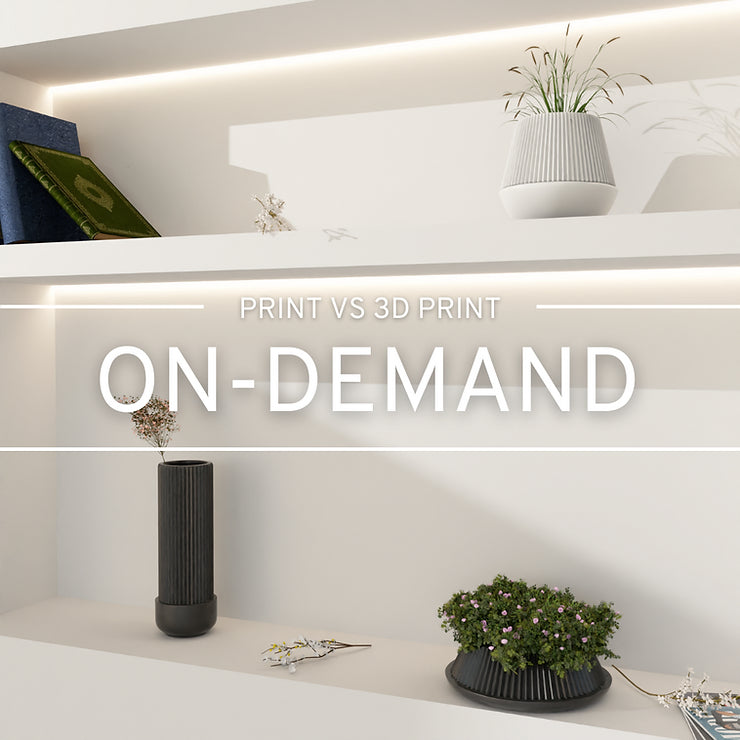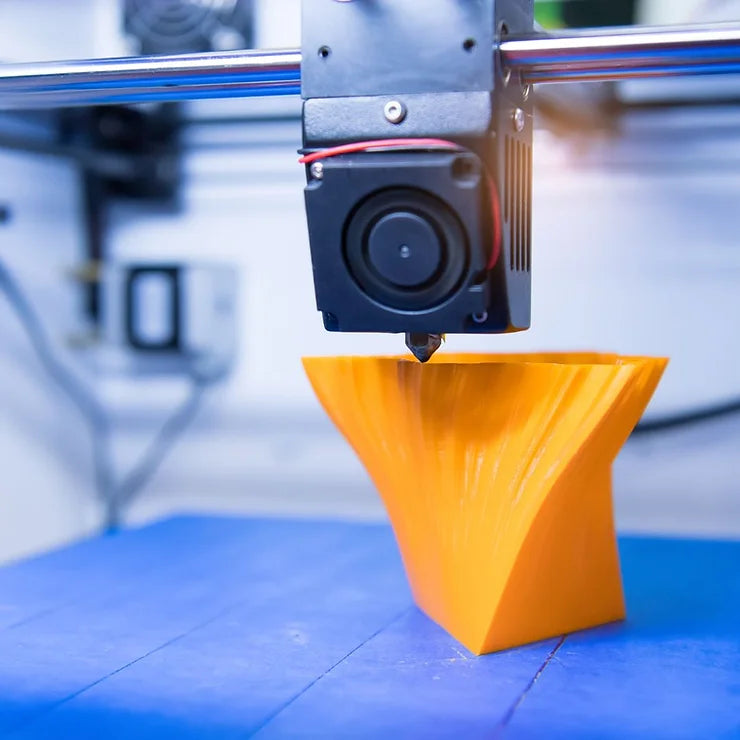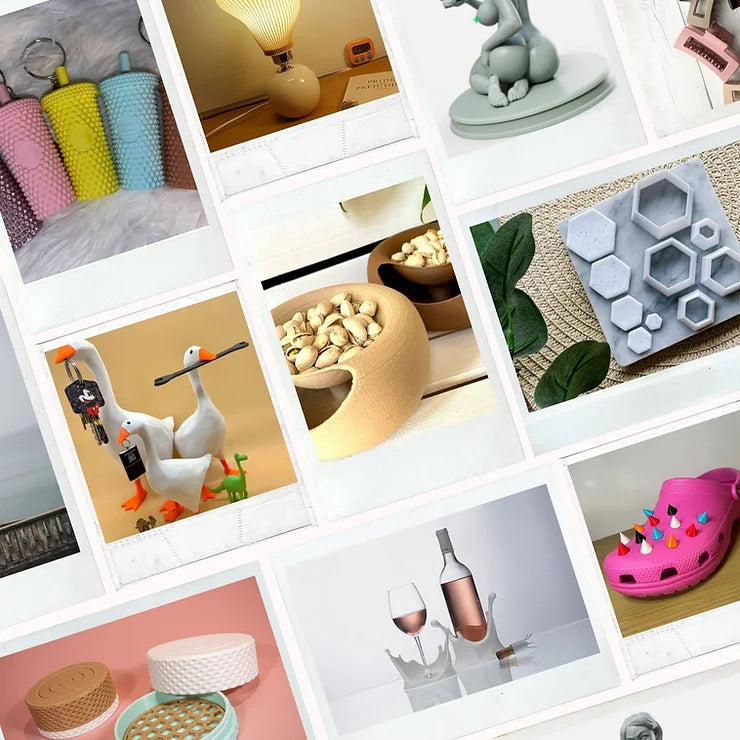Print-on-demand (POD) and 3D print-on-demand (3DPOD) - what are they, how are they different, and how can you use them to source products for your business? While POD has been around for a while, not so many people know how it actually works. Let alone 3DPOD as it’s a pretty new concept and a way to source products for e-commerce or dropshipping business. We’ve prepared this article to shine a light on the two seemingly similar, yet quite different services.
Prefer watching videos rather than reading? Here’s a 14-minute video that can be played at 1.25 speed.
We’ve come a long way
Image sourcing items for your e-commerce 20 years ago. You’d have to discover reputable suppliers somewhere across the world, board a plane with a suitcase of cash, and then trust those suppliers to actually produce products for your business. This process was time-consuming and expensive while lacking trust. Fast forward to today and we are fortunate to have a ton of convenient, user-friendly, and trustworthy solutions for sourcing products from the comfort of our offices or homes. Dropshipping platforms, print-on-demand services, managed merchandise agencies and lately online wholesale platforms like Abound, Handshake, Ankerstore, or Faire are just some of the examples of reliable and easy-to-use product supply sources. Luckily, with the explosion in retail e-commerce sales that are projected to reach 7.39 trillion dollars by 2025, we can expect to see more and better solutions for sourcing products in the future.
What is print-on-demand and who uses it?
Print-on-demand is one of such solutions and it’s here to stay for a good reason. Imagine celebrities like Eminem, Beyonce, or Harry Styles running t-shirt and hoodie sewing factories. Highly unlikely, right? Just like for example Redbubble with over 26.5M monthly visitors, celebrities and many textile and paper-based e-shops have embraced print-on-demand service to source merchandise for their brands.
No wonder why. We can see that celebrities have embraced the trend of selling their own merchandise. Beyonce, Harry Styles, and Eminem all sell customized hoodies and t-shirts. In reality, the entire market is expanding, which is excellent for dropshippers and the eCommerce sector as a whole. This suggests that there are more choices for where to source things. We are aware that none of these famous people own their own printing companies, so it is still wonderful to see them all using platforms for print-on-demand services.
So, who uses print-on-demand? Let's use Redbubble as an example. With 26,5M monthly visitors, Redbubble mostly sells t-shirts. However, they have moved into other product categories, including textiles and items that can be customized with prints to express one's personality. Below in the picture, there are some more businesses that specialize in selling printed textiles or paper items.

There are numerous platforms available that concentrate on a variety of products, design tools, and delivery methods, but they are all primarily focused on providing high-quality products to your clients on your behalf.
The whole print-on-demand process is really simple. A person creates merchandise- a product they want to sell with a design of print they hope will complement it and serve as a symbol of their brand. The platform then executes the print on your behalf and provides the finished product to your consumers whenever an order is placed. All products have been packaged and checked for quality, and the entire production and shipping process has been successfully regulated.
However, people must keep in mind that there are numerous print-on-demand platforms, making it difficult to decide which one to select.
Here are the key ways to filter the platforms:
-
Wide product assortiment. Each print-on-demand platform has something in common. They all have a wide product assortment, where people can choose anything from t-shirts to hoodies, bed linen, mugs, bikinis, you name it. Choose the one that is the most relevant to your shop in terms of products.
-
Convenient designing tools. All of these platforms have design tools, either something that can be used by themselves, where a person can drop their text or images or some of the platforms offer design as a service where they do it all for their clients if they don't feel particularly creative. That's something to consider before choosing the platform;
-
Integrations with common platforms. All platforms are integrated with eCommerce platforms for super seamless and easy product fulfillment. First of all, it's quite easy to upload the product, straight from the platform onto the shop whichever platform a person uses. Most importantly it helps to streamline order execution massively. Imagine whenever u get an order you don't actually have to do anything about it. The print-on-demand platform gets notified about each of its client orders through the integration and they fulfill orders on their behalf. Don't worry if you are selling on diff eCommerce platforms, you can just pick the custom API and then adapt it to your own eCommerce store for quick and easy integrations;
-
The fulfillment includes production quality control and shipping. All of these platforms do this for their clients so there's nothing to worry about apart from selling products and scaling sales.
How does 3D print-on-demand work and what is that?
Here comes Vulkaza. In order to explain 3D print on demand, let's first talk about the year 2020, when the world was running out of gears and supply chains had broken down. At that time, manufacturers banded together and created a revolution. Makers from all across the world have gathered together in closed groups to begin manufacturing face shields for caregivers, overcoming supply chain issues, and genuinely contributing to the world's salvation.
Fast forward two years down the line supply chains are still broken we still run out of stock, so many different problems that actually cause troubles in getting products across the world, so essentially the world still needs makers who are actually a distributed manufacturing force available in pretty much any country across the world. Vulkaza is connecting eCommerce with local manufacturers being 3D printers that are distributed all across the world. So that you can actually produce your products in the country of your market.
Everything in 3D print-on-demand begins with a concept. Only a filament exists prior to the finished product; At Vulkaza, we do have a catalog, so if a person doesn’t find himself being very creative today, there’s an option to create an account and choose products from the catalog. The ones who feel creative can simply tell us what product is needed to sell and we'll design it for them. Once the design or product selection is complete, you can upload your products to your store using integrations or a custom API. Every time a person sells, we are notified of the order and pass it along to the manufacturers in the closest area. Therefore, if our customer’s company is in Germany but their client is in the US or Canada, we will 3D print that product in US or Canada, so that we can always provide local shipping. It’s like Uber driving. 3D makers pick up the order 3D print and ship it to your end customer doors.
Key differences between POD and 3DPOD
The key difference between POD and 3DPOD is products and that POD already has a product on which print will go while the meantime 3D print-on-demand has only a material. A complete list of the differences may be seen in the image below.

How POD and 3DPOD can be useful for businesses
-
Businesses don't have to maintain an inventory with any platform, which improves business liquidity as well as warehousing and logistics.
-
There is no MOQ so companies could be selling 1 item or 1 thousand items; it doesn't really matter because the product is made only when the purchase has been made.
-
Don't have to worry about the products because the platforms take care of quality control;
-
Worry no more about the shipping because that takes care of it for you;
-
All businesses have to do is concentrate on growing their sales and managing their budget to attract more customers to their business and sell them more items.
There’s hope on the green side. Make smart decisions and check out Vulkaza or any print-on-demand platform. Hopefully, this article was useful for you. Feel free to contact us if you have any questions and would like to consult more about 3DPOD.



